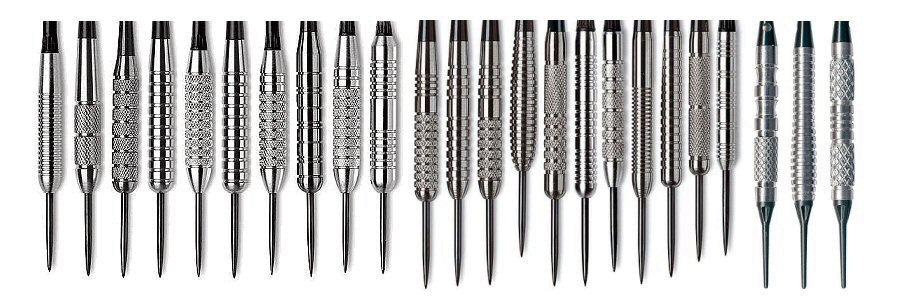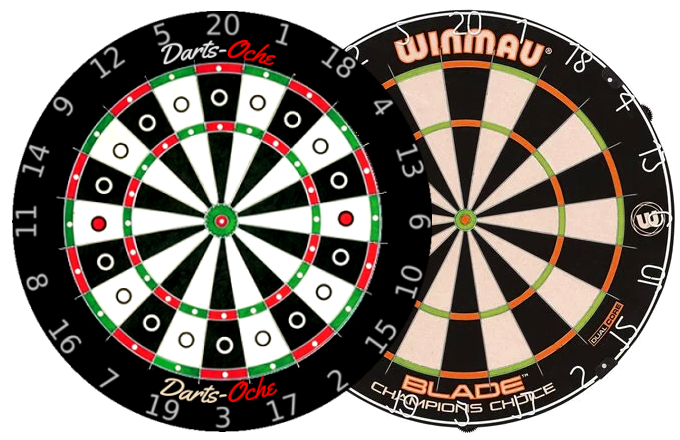Tuning your game
Usually, people find this page when something has gone wrong with their throw or lack the consistency needed to play well. Why can some players put down the arrows for a few years, immediately score high, and find the ability to play an excellent average game while others struggle?
Most pub players won't analyse how they throw, what is working and what is not and lack the basic skills to tweak or tune their game. I have been fortunate in my working career to have been trained by a top sports coach, not to play darts but to give feedback and improve others' abilities in the modern business world. Why a sports coach for such a task? They can strengthen what is good and develop what is weak, unlike others who work mainly on theory and case studies.
Coaching
In this instance, I am going to make you the coach! Which you can use to help others and, in turn, will help you. First, allow a player to warm up and not look at their first few throws. Let them loosen their arm and throw freely. Now, I want you to analyse what is working what is and isn't consistent.
A few tasks
High scoring/cover shots.
Any professional will have their own warm-up routine. One isn't necessarily better than the other. But a good warm-up isn't just throwing at the treble twenty. It is one that uses the whole dartboard.
For high scoring, consistency is what a player strives for. Generally, players with a strong stance play better than those who lift and kick their back foot like a mule when they throw. I know some players do this effectively, but this is about returning to basics.
As the 'coach' views the scoring and the stance. Is the stance consistent? Is the lead foot positioned the same way on every throw? Is the backfoot lifting, and is it in the same position, or does this vary from throw to throw?
I tend to refer to a stand in a few ways. It needs to be firm as if you were throwing a punch. The power comes from the floor up. If the back foot lifts, you move forward with the throw and take the power out.
A stance can also be referred to as the boat's tiller or, in this case, the tiller of the throw.
Extend your throwing arm in your normal stance position without holding a dart. Is your arm straight? If you release a dart in a throw from this stance, this is likely where your dart will land if you view your fingers in relation to the dartboard.
If right-handed and you find the arme extension slightly pointing to the left of the dartboard, I.e. the no 5, then keep your arm extended and adjust your stance slightly. In this case, move your back foot to the left, and naturally, your extended arm will move to the right, Hence the tilly expression. The reverse is true should your arm be slightly pointed to the right; move your back foot to the right, and your arm will move left.
In order to throw a dart straight, you first need to grasp this concept.
What if you tend to throw low
We are back to the stance. Bringing your back foot slightly forward naturally makes you stand taller, and this will also adjust the posting where your dart will fall IF all other aspects are the same. Again, the reverse is true if throwing high.
In addition to the movement to the back foot, the position of the front foot also needs to be reviewed. A minor turn of the foot will also have similar effects to that of adjusting the back. It is a case of giving feedback and adjusting one thing. Does it work? Great, no, make another change.
You can do this with your play or provide this simple technique to others.
Holding the dart
Many things have been written about how to hold and where to hold a dart. Strangely, there are hundreds of different shapes and weights. Plus, hundreds of different-length stems and different shaped flights. All have their own part to play, and one set doesn't fit all. But most will agree that the dart needs to be released straight. Otherwise, the flight will direct the dart in an alternative way.
If you hold your dart and look down on it as you throw it, the point needs to be straight at the target; otherwise, the dart will drift during flight.

Dart barrels, stems and flights
Barrels, the choice is vast, and the world champions' darts might work well for them but may not be ideal for you. If you are very new to the sport, I suggest not buying the most expensive dart on the market, as it doesn't mean you will play better.

If you are lucky enough to have a dart supplier that allows you to test-throw some darts before purchase, then great. Unfortunately, for most, this is no longer the case.
If there are brass darts available, these are likely to be cheaper than tungsten and to start with, this may be the best choice until you find a weight and length that suits you.
Stems and flights
Some suppliers sell a multi-pack of stems and flights which contain different lengths of stems and different style flights. Using such will help you determine which best suits you.


So, what are you aiming for in a dart?
Consistent landing is the main objective and something that fits your hand well. Generally, darts should enter the dartboard at a slightly upward angle. If entering down, then several adjustments can be made to correct this. I know one famous dart player Phil 'the Power' Taylor, was highly successful with one set of darts that entered the dartboard with the flight down, and some have tried to replicate the throw, but in general terms, most players prefer the dart slightly up and this allows the following dart less obstruction.
A short stem will make the dart fall faster, changing the centre of gravity of the dart towards the front.
Long shafts do the opposite of the short and bring the centre of gravity of the dart back.
Flight vary a lot. In basic terms, the standard shape is the most common flight used, but the size can differ depending on the manufacturer.
The pear-shaped flights are rounded and smaller than standard-shaped flights. Players with shorter darts tend to prefer these.
The slim, narrow flights allow the dart to fly faster and is a common flight used on low-weight and soft-tip darts. These flights can be unforgiving to a novice thrower.
Although technically different, the different shaped flights affect the dart's flight. While a bigger flight will drag, making it smoother, like the style of the darts, not all the shape fits all.
Dart weights. Commonly used are darts weighing 21-24g. However, darts are available in lighter and heavier models. The other consideration is the tungsten percentage.
Tungsten is a heavy metal and brittle, so we don't see 100% tungsten darts. Usually, the tungsten is mixed with a softer metal such as nickel. In general terms, a high tungsten value dart tends to be thinner than the equivalent weight dart made from brass or less percentage tungsten darts. Thin darts can make for tighter grouping and hitting a 180 easier!
Aiming and accuracy

You can now buy a dartboard that is marked to indicate the middle of each scoring segment. Aiming at the target area's small, middle segment naturally focuses your throw and will improve your accuracy, given practice.
If you don't own such a board, you can use a chalk mark on a standard dartboard, which can easily be removed later with a moist cloth.
Other practice boards are also available. Many pro players use what is called a Champions Choice Dartboard to practise. These dartboards have half-size doubles and trebles.
Practice Game
One game I play as a warm-up routine is 180 Around the Clock! It is a basic game that focuses on hitting trebles, three darts at each treble one, two, and so on around the dartboard. If your dart hits the target treble, you score three points; a single of the target treble, you score one. Throw three darts in each treble as you make your way around the board, you will score 180! Hence the name.
Practice
There is no substitute for practising. If you want to play well, you must put in the hours. If you are the best in your club, move on to find more challenging players, as you will find progression will become slower.
Maths
This is a no-brainer. If you play darts, you should be able to do some basic asthmatic. It is essential to play the sport well, and like earning to type, you will find patterns emerge and soon should be able to real off the combination shots. I do provide a checkout chart on this site to help, but it is deliberately designed to be challenged, and it isn't the way I always finish. As any good player will tell you, you shouldn't need a checkout chart.
Understanding checkouts is important to a player. The middle game of 501 is where a good player knows what to throw to leave a checkout finish. On 265 and hit 100, you leave yourself no finish, as 165 is what is known as a boggy number. You can checkout 167 and 170 but not 165 in three darts.
Checkout charts are just guides; if your opponent is not on a finish, you may not opt for a high-risk three-dart checkout. Setting up a favourite double for when you return might be better.

